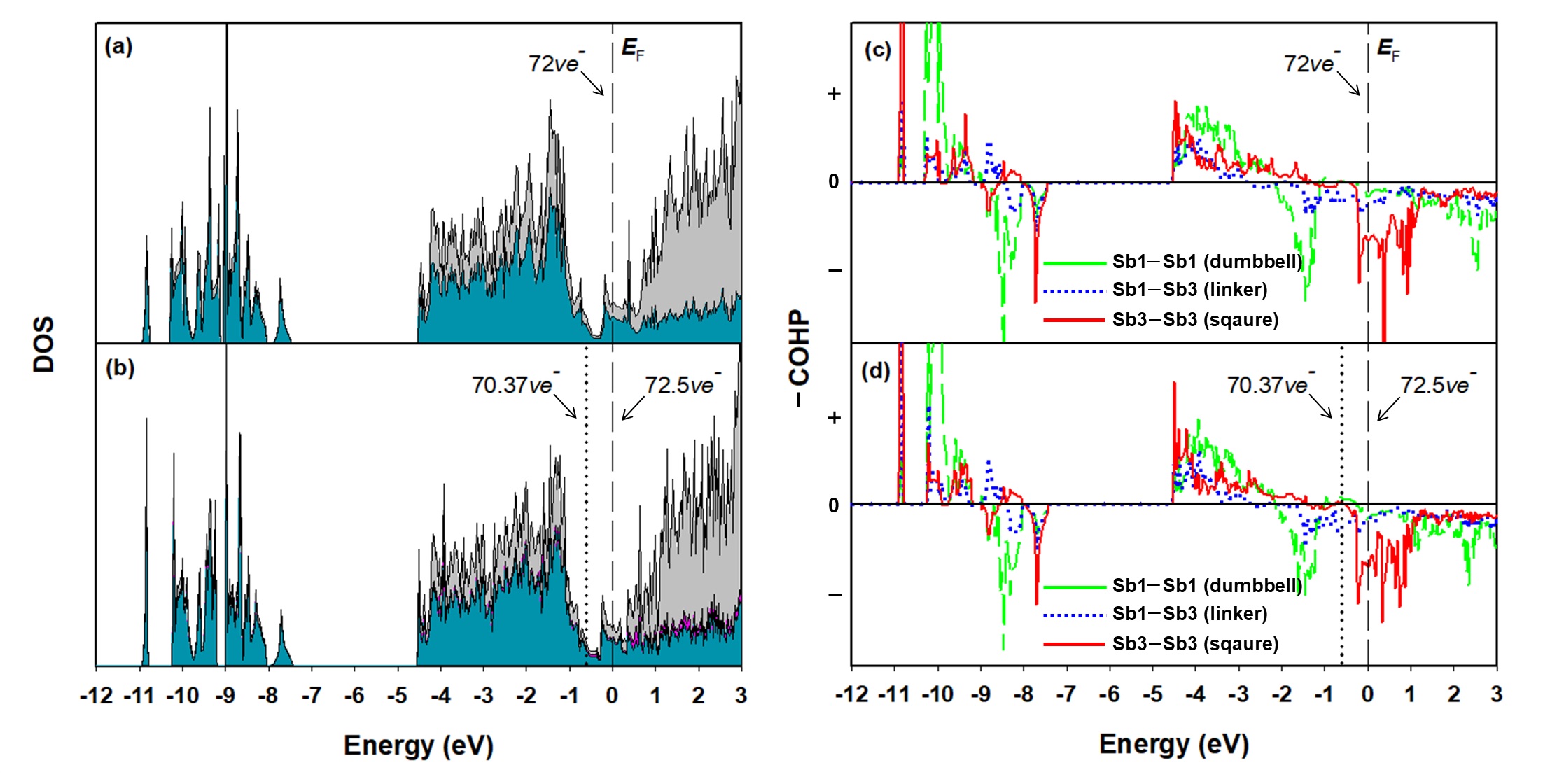|
In our previous articles, we reported two series of complex Zintl phase thermoelectric materials adopting the Ho11Ge10-type structures: Ca11-xYbxSb10-yGez (0 ≤ x ≤ 9; 0 ≤ y ≤ 3; 0 ≤ z ≤ 3) and Eu11-xKxBi10-ySny (x = 0, 0.26; y = 0.86, 1.93) systems. In these investigations, we have tried to apply the p-type single or double doping for the anionic or cationic elements. However, since there was no attempt to apply the n-type doping for this Ho11Ge10-type phase, we planned to introduce n-type dopant using rare-earth metals for the binary Ca11Sb10. Four novel ternary Zintl phase compounds forming the ternary Ca11-xRExSb10-y (RE = La, Ce, Nd, Sm; 0.18(4) ≤ x ≤ 0.42(2), 0.14(1) ≤ y ≤ 0.41(1)) system were successfully synthesized by arc-melting, and their crystal structures were characterized by both PXRD and SXRD analyses. Given that we used the n-type dopants, we originally expected to provide more than 72 valence electrons (ve-) for the title system. However, due to the non-neglectable Sb deficiencies found at the Sb3 site (Wyckoff 8h), the total number of valence electrons ranges only between 70.37 in Ca10.58(2)La0.42Sb9.59(1) and 71.48 in Ca10.82(4)Sm0.18Sb9.86(1), both of which were less than 72 ve-. To understand this observed Sb deficiencies, a series of theoretical calculations using tight-binding linear muffin-tin orbital (TB-LMTO) method were performed. Eventually we reveal that the nature finds its own way to stabilize the given crystal structure by allowing a certain amount of vacancies at the Sb3 site (Wyckoff 8h) in the title compounds. |

|
 121st General Meeting of the KCS
121st General Meeting of the KCS
 121st General Meeting of the KCS
121st General Meeting of the KCS